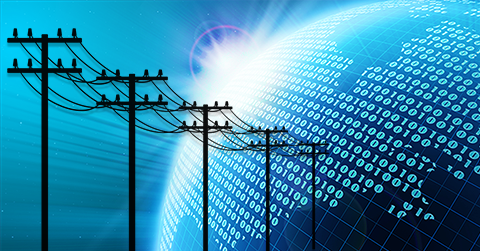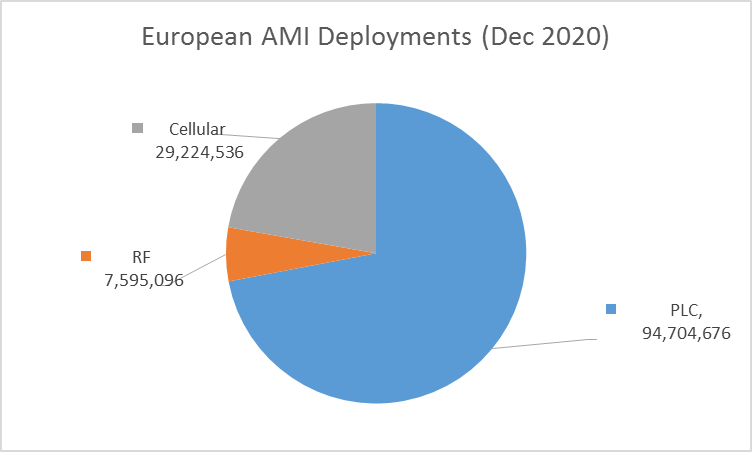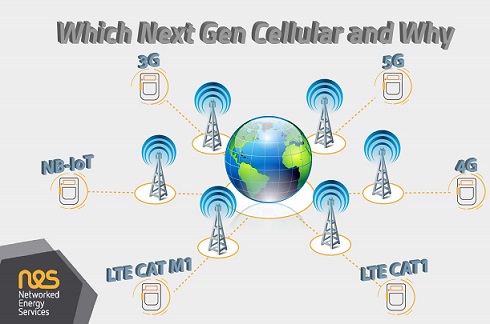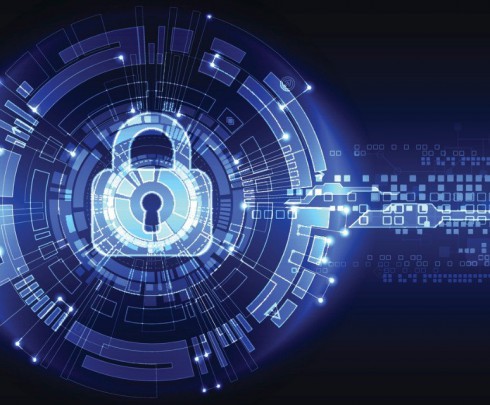
AMI and Power Line Communications
Jul 01, 2021Smart metering with two-way communications provides the critical foundation for establishing a smart grid. Advanced metering infrastructure (AMI) systems employ a wide range of communications technologies, including radio frequency (RF) mesh, power line communications (PLC), and Cellular. Utilities should look for solutions that support a variety of applications that fully integrate into future operational plans, but what type of communication solution is best?
Utilities own and manage a vast network: the electricity grid that delivers power to their customers. Through decades of investment and operations, Distribution System Operators (DSOs) or Distribution Companies (Discoms) have become experts at managing their electricity distribution network that reach 100 percent of their customers. By using the electricity distribution network for communications, a Discom can leverage their extensive experience and also reuse maintenance tools and resources, thereby avoiding the maintenance costs of a dedicated communication network. With every extension of the electricity distribution network, the communication network grows accordingly.

Source: Berg Insight
PLC uses the power lines that run between the Discom’s low-voltage distribution transformer and the customers’ meters. By embedding PLC into the distribution line, it enables solutions to obtain a level of grid intelligence that cannot be matched by any wireless solution. For example, because RF and cellular solutions are physically separate from electricity lines — a network unto itself — they cannot receive any information about electricity lines or power quality of the distribution network. Data from RF meters is limited to only what the meter can provide.
PLC is a cost effective, proven and reliable communication solution for smart metering, and PLC based solutions can provide additional smart metering benefits and advantages that are inherent to using the utility’s existing power lines for communicating.
PLC systems are able to analyze the communication statistics to maximize grid intelligence while minimizing operating costs. Also, since PLC communicates over the existing power lines, it can provide grid mapping and phase information of the low voltage network level for each meter.
In addition, PLC has these other advantages over RF solutions.
- PLC based systems are less expensive over the life of the system (e.g. deployment, operation, and maintenance).
- There is automatic establishment of communication during the installation process and thereby avoiding any costly waiting times for the installer.
- No antenna tuning or adjustment of antenna direction is required.
- Communication is reliable in extremely difficult meter locations (for example, metal shielded cases, deep underground installations, etc.).
- No extra installation effort (such as external antenna installations) is required even in challenging environments.
- There are no changing environmental conditions due to seasons or weather that affects signal strength once the devices are installed.
Of course, not all power line technologies are designed the same, and not all PLC systems can provide all of these capabilities. Unlike the old, slow power line systems designed for rural AMR applications, the Networked Energy Services (NES) System is optimized for AMI and smart grid applications. The NES System offers proven reliability, performance and security that is better than other PLC based solutions. NES’s power line technology (BPSK) is based on Open Smart Grid Protocol (OSGP). It is used in over 40 million meters worldwide and has been proven to be highly successful with unmatched reliability. The NES System consistently provides greater than 99.8% remote daily meter reads. This has been documented in numerous large deployment projects. This percentage is significantly better than the performance of other PLC systems as well as RF and cellular systems.
In India, while the Discoms have invested heavily in network infrastructure improvement in the last 10-15 years, they are still not leveraging this network for AMI Communications. As proven worldwide, PLC can be a better choice for AMI Projects, as it cost effective and avoids any dependency on any third-party network, which is the case in RF / Cellular Technologies.
The NES system's adaptive, self-healing mesh communications, repeating technology is designed to ensure that meters are reachable whenever desired. Here are some of the specific highlights of the NES System and its PLC technology that enables reliable communications that are not included in other vendors’ PLC solutions:
- Patented, field-proven repeater path selection algorithm
- Digital signal processing
- Incorporates several unique technical innovations to ensure reliable communication:
- Automatically switches frequency if blocked by noise
- Noise rejection and cancellation
- Forward error correction
Since the NES architecture uses the powerline for communications it offers distinct advantages over other types of communications. By analyzing the communication statistics (i.e. signal strength, communication phase, and alternate paths), the system maximizes grid intelligence while minimizing operating costs by embedding communications and monitoring directly into the electricity grid. For example, the NES System provides low voltage grid mapping of the distribution grid which can be used to determine transformer loads, isolate outages, proactively identify problems, automatically update GIS information and speed up repair times for the operations team.
By using the unique characteristics of NES’s proven power line technology based on OSGP, the solution can determine the topology and identify connection of actual phase in its portion of the LV grid. The NES System tracks the linked associations of meters, segments and feeders with its transformer creating a map that is updated as grid topology changes. This data is made available at the head-end where it can be utilized for GIS integration, outage management system (OMS), detailed load analysis, phase balancing and other grid modernization applications.
Additional advantages of the NES PLC based system includes:
- Distributed intelligence at each transformer
- Visibility into grid topology
- Superior information regarding grid health and behavior
- Intelligent outage detection
- Improved asset management
- Efficient network operations
- Increased reliability
The NES System’s underlying OSGP based PLC technology helps make the smart grid smarter. Its wide adoption and deployments prove the reliability and effectiveness of OSGP for smart grid and smart metering applications. It also establishes a performance threshold that other smart metering technologies have yet to attain.
About the Author:
Larry Colton is Director of International Business Development and Government Affairs and has been working with utilities and smart grid vendors for more than 25 years. He is a licensed Professional Engineer and certified Project Manager, has received several patents, and participates in industry working groups, including IEC, ETSI, ANSI, IEEE, NEMA, EU Smart Metering and Smart Grid groups associated with the development of public and industry standards.












